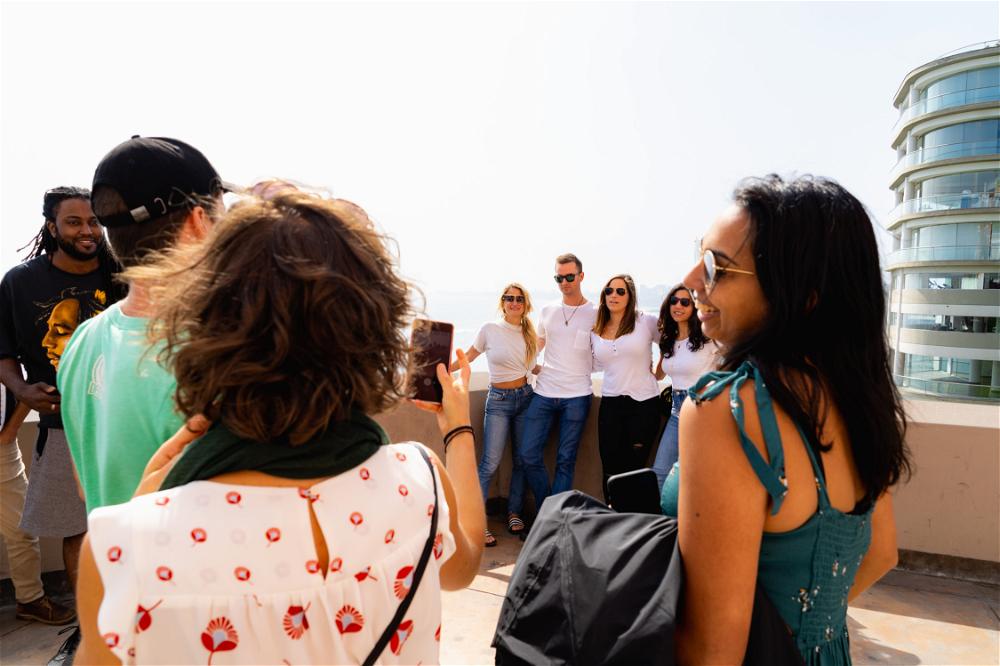15 Best Remote Work and Travel Programs (Alternatives to Remote Year)

How do you choose the best work and travel program for your preferences and job? In this guide, I compare the top retreats and experiences to help find the right one.
This article may contain affiliate links. We earn a small commissions when you purchase via those links — and it's free for you. It's only us (Becca & Dan) working on this website, so we value your support! Read our privacy policy and learn more about us.
Table of contents
- WiFi Tribe
- Remote Year
- Noma Collective
- Outsite
- Noma Collective
- Venture with Impact
- SOJRN
- Unsettled
- Nomad Train
- Coworkations (Warning: not a remote work and travel program)
- Behere: not a work and travel program
- Selina: not a work and travel program (but some people think it is)
- Nomadize (red flag)
- JoinMyTrip “Coworking Trips” (red flag, but only for remote work trips)
- WiFi Artists
- Figuring out which remote work and travel program is right for you
I’ll just be frank: I did a remote work-travel program for 4 months, and Dan did one twice! The first time for him was on tahe year-long 12-month program, and the second time was on a four-month program with me.
There are lots of remote work and travel programs out there, and some are best for certain types of people.
In this guide, I’ll outline what to know about a lot of the group programs that let you work remotely and see the world. We have friends who have done a whole slew of them, and have given us feedback and told us about their experiences first-hand.
I’ll clear up common misconceptions about each, and you can do the math on which ones you want to apply to.
I’m also going to clarify some things about companies that seem like remote work and travel programs (but aren’t), as well as some to avoid!
WiFi Tribe
An alternative to Remote Year, WiFi Tribe has been described by friends of ours as being more basic, but with the details I’m going to share here. The info below is from a friend who has done multiple WiFi Tribe trips.
Here are a few main points about WiFi Tribe, and what sets this remote work group trip program apart.
Main summary
- WiFi Tribe offers the three key elements to working remotely and traveling with a program: a place to work, accommodation and a community of friends (participants).
- Less “structure:” While Remote Year offers LOTS of programming and “experiences” to add to your week, WiFi Tribe does not. The key idea is that the group plans what it wants, organically.
- Community is STRONG: the group functions wholesomely, which is a big positive for a lot of people who choose WT exactly for this reason. For someone worried about the pros and cons of being a digital nomad, WT solves the fear of isolation.
- Autonomy: there are no hard feelings if someone wants to dip in and out, and “do their own thing;” in the same way, anyone is welcome to plan something for the group.
- Participant curation: While it has been pretty clear that Remote Year accepts basically anyone who can prove that they work remotely, want to travel and want to do the program for the right reasons (in my experience), WiFi Tribe is known to reject 80% or so of applicants, thereby creating groups of people who are vetted for a personality fit — a lot like getting a job!
- Group sizes: Groups in WT are intimate, between 10 and 30 participants in total.
WiFi Tribe’s website currently says, “Our current experiences are designed for people between the ages of 21 and 45. This helps us keep lifestyle expectations aligned. We’re hoping to build out experiences for all ages in the future.” Keep this in mind for if you don’t fall within these limits, or, if you are seeking a program that does not have age restrictions.
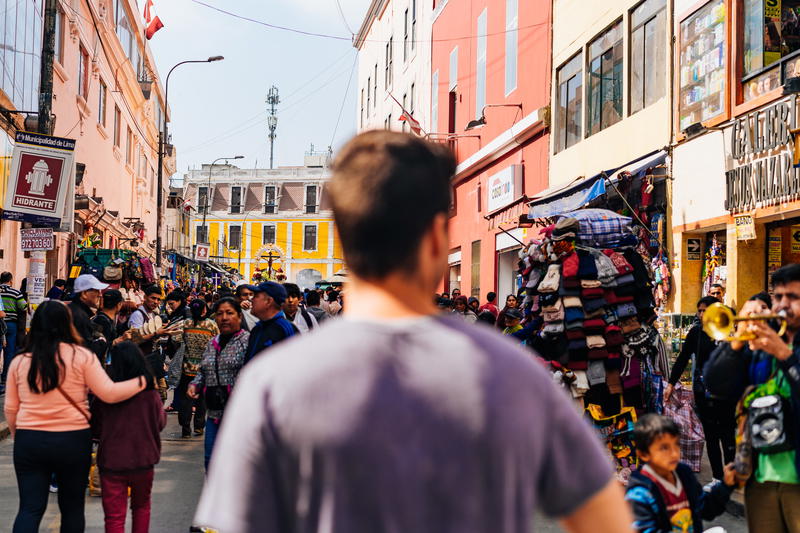
Who it’s for
WiFi Tribe is, based on the above parameters, for people who are “really community-oriented” and who want to meet and connect with other professionals while seeing the world.
WT participants have hailed from more than 60 nationalities in the curated communities. There is a big emphasis on sharing values, getting the right “fit” of incredible people in each group and “togetherness.”
I think the WiFi Tribe website, even in its main page, does a great job of spelling out the community’s aims right from the get-go.
Another friend of ours was rejected from joining WiFi Tribe because they did not work enough hours per week, while owning their own business, when they quoted their work schedule in an application. WT rejected this person on the grounds of this person potentially not fitting in with the schedule that the majority of community members have. You can see how the curation works in this way.


Remote Year
Note: As of December 2024, Remote Year has effectively ended operations. If the company resumes under new ownership, we will update you here.
Remote Year, founded in 2016, was probably the first groundbreaking “remote work and travel program” everyone heard about. That was a while ago, and working remotely (and traveling) is SO much more commonplace now.
When Dan joined Remote Year, we had to explain the concept of working remotely around the world and traveling with a group of people, and people couldn’t wrap their heads around it. Nowadays, it’s almost as if everyone knows someone who has done one of these programs.


Main summary of what to know
Remote Year operates with lots of opportunities for travel programs to join, ranging from one week to one year. The company offers destinations at every corner of the world, with staff to help you and guide you along the way in order to have the best time.
For me, the main benefits of Remote Year was the community, as well as the vetted coworking spaces, group activities, connections to local culture, awesome staff and for sure, the alumni community that I’ve been connected to ever since we ended our program in Mexico City.
Why are coworking spaces such a huge part of remote work and travel programs? See all the benefits of coworking spaces that a Remote Year trip taught me about.


Who it’s for
Honestly, as someone who thought that remote work and travel programs were only for engineers and web developers, Remote Year was great for me. I worked part-time for my employer in NYC in business operations, and the other part of my time was spent on content creation for this website, as well as some media that Remote Year eventually used on their website.
Our Remote Year cohort was full of people of diverse backgrounds. Our fellow participants worked as salespeople, writers, filmmakers, entrepreneurs, real estate professionals, jewelry designers, consultants and more. Many became my friends, and all in all, I learned how to work remotely and travel in a way that let me excel.
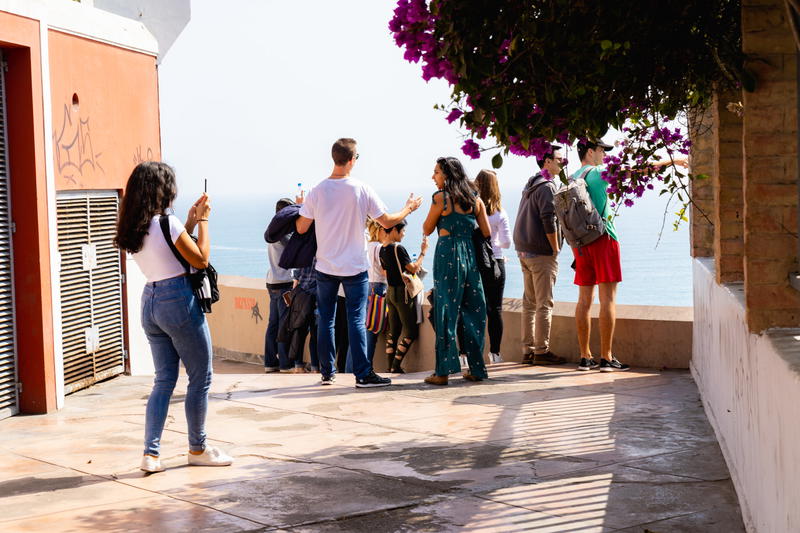
I can’t possibly describe my entire Remote Year experience here, so I would urge you to check out my guide called, What is Remote Year? to learn more. Remote Year totally changed my life (for the better!) and I’m so glad I took that one day to convince my boss to let me work remotely and travel.
Noma Collective
Use our exclusive discount code HALFHALFTRAVEL150 to get $150 off your Noma Collective program.
Hacker Paradise was also one of the original work and travel community-based programs that debuted in the mid-2010s with the rise of remote work. The company merged with Noma Collective, so you’ll see Noma Collective mentioned from now on! This “work from anywhere” attitude is present in the company’s mantra of “Work Hard, Travel Far.”
We also have a friend who did Hacker Paradise several times as a community participant, and I want to share this person’s findings on what makes HP different from WT and RY.
As a note, regarding the merger of these two remote work-travel brands, the Hacker Paradise “brand” that you recognize will is staying! Noma Collective is currently operating the trips and managing the Hackere Paradise bookings.
Key summary of the program
- Structure: Two program leaders plan events during every month and each destination.
- What your program fee gets you: accommodations in each city, a coworking space with WiFi, a SIM or eSIM for cell signal, the “community” and repeating events like Monday lunches (included in the fee), Tuesday potluck dinners, Wednesday Skill Share events, Thursday “meaningful conversation” get-togethers and Thursday “nights out.”
- Weekends: on a HP trip, weekends are free time, when people in the community might plan something like an activity, or group leaders may plan something. Every weekend is different. If the group does something held by an external vendor, there are no up-charges (which are common on RY experiences).
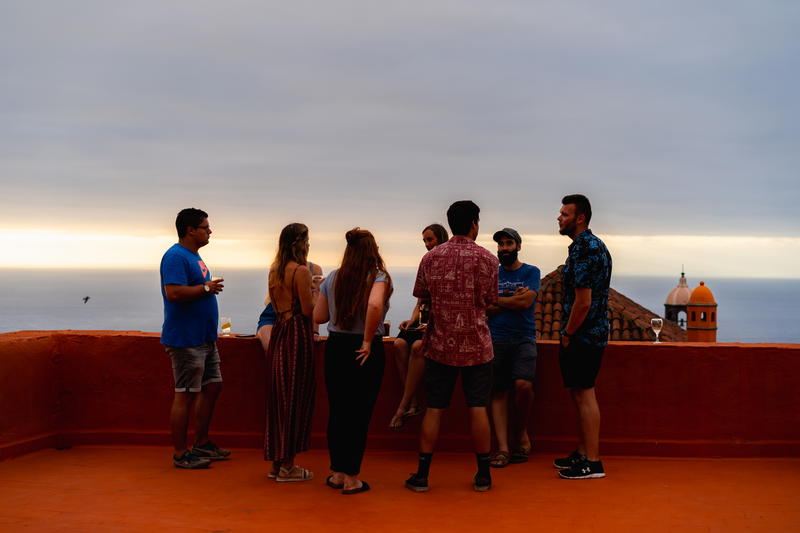
Who it’s best for
Noma Collective programs are best for people who are seeking the structure offered, and personally, I think this is great because I crave structure. I also crave structure when I’m away from my regular routine of home, and looking for exactly that.

A gift from us: Check out Noma Collective and use code HALFHALFTRAVEL150 to get $150 discounted on your Noma Collective program when you enroll.
Recap and comparison of the top 3 work and travel programs
Let’s summarize the top 3 “work from anywhere” travel programs for remote professionals in the most boiled-down way possible. Hopefully this could help you choose which one is right for you if you’re interested in these top 3.
- Remote Year: Lots of events, participants can be as group-oriented OR as autonomous as they want, lots of staff and support, lots of expectation.
- WiFi Tribe: Highly curated community, focus on values, fewer structural elements like fewer formal events on the calendar
- Noma Collective: A mix of both of the above, and falls in the middle, with mildly-curated groups, a mix of group events, autonomy is welcomed and a focus on community.
Now it’s time to see more work and travel programs and compare their benefits and styles.

Outsite
What is Outsite? My friend Jena “did” an Outsite house in Puerto Rico. Outsite is a formalized coliving type of environment, or “program,” you could call it.
What it is
Outsite calls itself, “Beautiful places to stay, designed for remote workers.” This means it is a coliving program, designed for people who want to come live at a house with a community. It was born from a desire to work in beautiful locations around the world.
The company has more than 50 locations worldwide and has more than 5000 members who have participated in the Outsite houses.
The “houses” have local experiences, shared spaces for working, and community initiatives like events with nonprofits in the region.
The “community” is what you get when you become a “Member.” By becoming a member, it doesn’t mean you’re automatically going to live immediately at one of the houses for a period of time; it means you get access to choosing which you’ll go to first, and encourages you to visit and stay at more and more Outsite locations.


Who it’s for
In short, Outsite is for if you want to latch on immediately to a close community in a gorgeous destination far from home. Showing up at an Outsite house, maybe even only for two weeks, is a good amount of time to try traveling and working remotely.
What to know about Outsite is that unlike RY, HP and WT, pepole go in and out of the location you’re in. This can potentially create a feeling of transience: someone is always leaving, and someone else is always showing up.
This isn’t a group that travels together; rather, it’s you who’s doing the traveling, and meeting different (transient) communities around the world who share Outsite values.
Noma Collective
I engaged a bunch with Noma Collective over the years, and spoke to the founders and leaders of the company over a video call once to learn about their Belize retreat. From what I see, NOMA focuses more on “wellness” than other programs, and escaping the walls of a traditional 9-to-5.
Noma Collective’s tagline is, “Bring your job, we’ll bring the world.” The company brings participants the full digital nomad experience by offering accommodations (usually apartments or hotels), coworking environments, daily events and “wellness.”

Included in the fees are things like logistics planning, excursions and events, as well as the community itself.
While I was most interested in joining NOMA’s coworking program in Belize, the company also offers places like Kenya, Guatemala, Portugal, Argentina, Morocco, Spain and Panama under the current offerings.
Venture with Impact
VWI’s founder (Ann) reached out to me a while ago to ask to make sure to include the company in lists of ours like this one.
Venture with Impact is a special organization, and the way Ann phrased the company to me was, “Each of our participants is partnered with a local non-profit to engage in a pro-bono project.”

So what VWI is, in essence, is a “coworking retreat” where participants can work remotely AND at the same time, work on a volunteer project that fosters professional development. The three tenets are LIVE - WORK - IMPACT and the retreats are 30 days long.
The current location offerings are Mexico City and Lisbon, Portugal (two of my favorite cities on Earth). There are also special one-week retreats and “custom retreats” for five people or more.
SOJRN
SOJRN is popularizing the idea of “studying abroad as an adult,” which is exactly how I once described Remote Year. SOJRN calls their experiences “chapters,” and mostly focuses on destinations like Italy, Colombia and Bali.
A lot of the SOJRN trips have a theme, like “Spanish in Medellin” or “wine in Tuscany.” Participatns will work remotely while staying in a place with a group, and create an unforgettable journey for everyone.
What I like about SOJRN are the missions and values: SOJRN emphasizes “slow travel,” to respectfully engage with new cultures, and positive impact, which means giving back to the communities that the group visits.
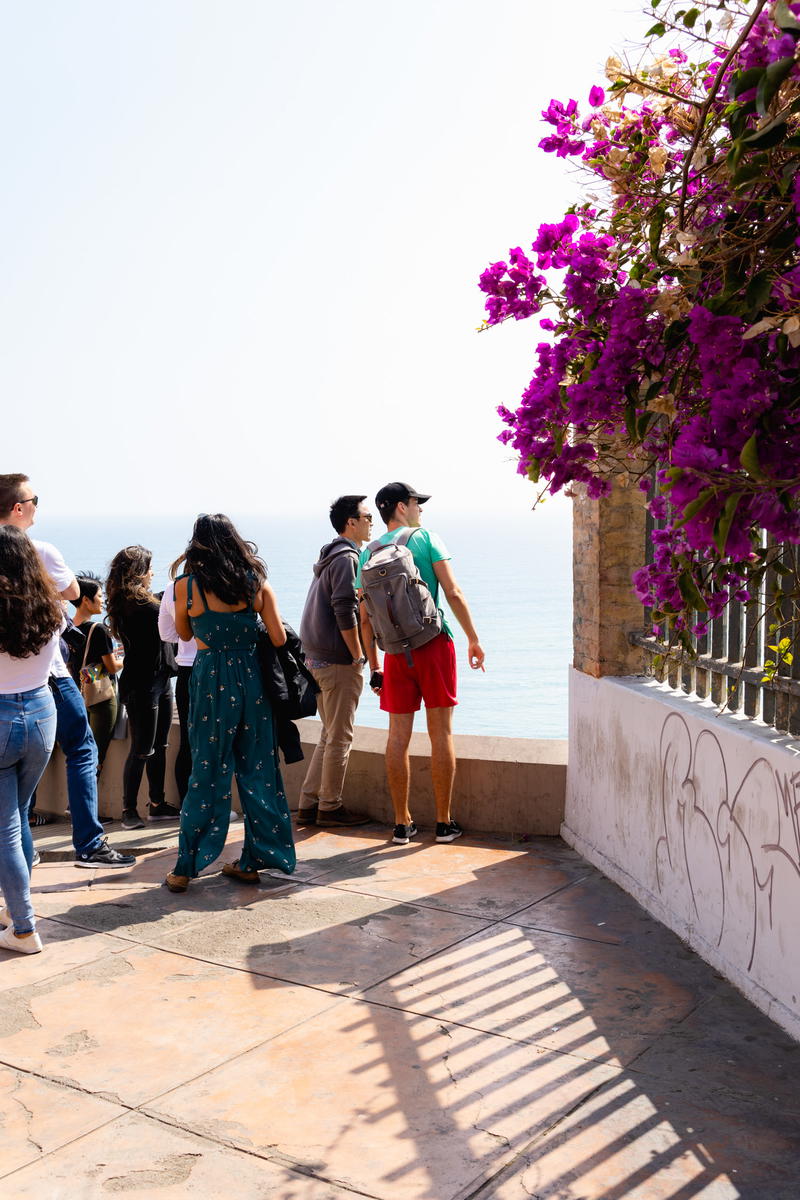
Unsettled
I’ve heard about Unsettled for a few years, and I wanted to know what made this program different. While it’s a younger program than the others, there does seem to be a focus on entrepreneurship and creativity from the get-go, with the company’s intro as, “Unsettled is a global travel community for entrepreneurs, solopreneurs, and creatives who are on a mission to live and work differently.”
Here are some things to know about Unsettled:
- Programs are anywhere from 1 to 4 weeks in places like Greece, Italy, Croatia, Bali and Peru.
- Unsettled has deep and though-provoking values like fueling inspiration, discovering the world around us, seeking purpose and pushing boundaries.
- Unsettled participants like to ADVENTURE, whether by doing adrenaline-inducing activities or pushing their limits together.
- Participants are mostly in their 30s to 50s, so you can expect a more “mature” crew in any cohort.
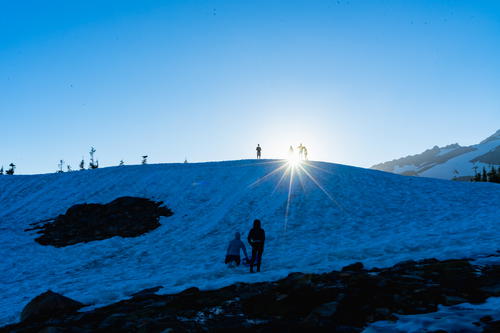

Nomad Train
Nomad Train held the first-ever “longest coworking journey by train” in 2017 when the program began. I think you have to love trains to try out Nomad Train as your work and travel retreat, which makes this type of experience pretty niche.
Nomad Train has (according to the website) had around 100 participants since the company’s maiden voyage. And there are really “out there” locations that these trips explore, like Kazakhstan and Uzbekistan.
I think in summary, Nomad Train is an extreme type of remote work and travel program, and I mean “extreme” in a good way! Most people think of Bali, or Western Europe, for their coworking adventure, but Nomad Train has brought remote workers to Russia and the Trans-Siberian Railroad as a way of taking groups of professionals on big trips.
Coworkations (Warning: not a remote work and travel program)
I learned about Coworkations from a blog called Career Addict, listing the best programs for working remotely and traveling. I believe it incorrectly lists Coworkations, which is not a program in itself, but rather, a database of “work anywhere” programs around the world.
While “Coworkations” is not a brand of a certain program, what it does let you do on the website is filter by location or “theme” (like “fitness” or “foodie trips”). In your results, you will get trips from companies I mention above, like Noma Collective.
I wanted to make this crystal clear because sites are listing Coworkations as “one of the best programs,” but it is not a program at all: it’s a website.
Behere: not a work and travel program
Behere is like an “Airbnb for digital nomads.” That’s right: if you read this piece from Fast Company about Behere, you can learn about how this “program” of sorts lets professionals safely find accommodation (as well as coworking spaces and fitness studios) in new cities where they want to be digital nomads.
Unlike the other remote work and travel programs that have you traveling with the community, Behere allows you to be part of the local community by living in a place where you can work remotely and enjoy your surroundings.
If you want to consider the digital nomad lifestyle without the strings attached of a constant stream of events or structure, Behere creates a way to “just go live somewhere else” but not deal with the overwhelm of finding a place to live from scratch.
There are some membership fees, and I’d suggest reading the FAQ to see how Behere works in practice.
Selina: not a work and travel program (but some people think it is)
I want to make this clear: I’ve seen sites like OwlLabs and Freaking Nomads list Selina as a work and travel program for remote professionals. It is not. In addition, as of late 2024, Selina is only operating at 11 locations in Thailand, Mexico and Portugal, down from close to 100, prior to that.
What Selina is
I’ve done Selina stays, and I’ve coworked as well at Selina locations without staying there. Selina is a hostel company that caters to digital nomads and the digital nomad travel lifestyle. Each hostel (located in many parts of the world, but mostly Latin America and Europe) has fun events, social mixers, tour excursion opportunities, cool “vibes” and trendy decor.
There are also coworking spaces at most Selina locations where you can buy anything from a day pass membership to a month of membership in order to work remotely with WiFi in a professional environment (where people will probably be wearing flip flops and hoodies).
I’ve stayed at Selina locations (hostels/hotels) in:
- Cartagena, Colombia
- Chicago, IL, USA
- Cancun (Centro), Mexico
- Mexico City, Mexico (Please note that all these locations except the Cancun Centro one have since closed, as Selina is working through revamping the offering)
And I’ve been a CoWork member at Selina in:
- Medellin, Colombia
- Mexico City, Mexico (These locations are no longer operational or have new ownership)
The best job I’ve done of explaining how Selina works is at our Selina Mexico City Downtown review, where I talk about our accommodation, the coworking space and things like the shared kitchen for longer-term stays, like ours.
Selina is good for someone who wants to travel and work remotely, maybe on their own or with a buddy, and potentially meet new people who are also traveling solo and lapto-ping.
What Selina is not
Selina is not a work-and-travel program for remote professionals. In my Selina experiences, there was not much done to group together the people who were there to work remotely, versus those who were 18 years old and on a college holiday vacation.
In staying at Selina, you have to know that the locations are all hostels first (as I see it), and have coworking spaces second. This means everyone is staying at Selina, but not everyone is working. If this is an environment that speaks to you, the benefit is that you can drop in and out of working and feel like you are on vacation.
So, Selina is best for being on vacation and having access to a place to also do work, or, traveling on your own, having the ability to meet other travelers and doing whatever you want on your own schedule.
Nomadize (red flag)
I saw Nomadize publicizing remote work and travel programs, but just using my best judgement by finding my way around the website, I’m not going to recommend this company.
All of the programs say “almost available” (what does that mean?), or “coming soon,” meaning they have nothing available right now. The company’s social media also doesn’t show any real participants or testimonials.
JoinMyTrip “Coworking Trips” (red flag, but only for remote work trips)
I came across JoinMyTrip from another website, and had to look into it. The website claimed to offer “300 trips,” which is really a lot, and uses the motto, “Experience Relaxing Group Trips.” This is all fine, as I perused the trips, which are anything from trekking Scotland to exploring Japan.
At the very bottom of the website, there is a button called “Remote Working.” I clicked it, and got a blank page. Plus, in the “How It Works” page, there are no mentions of remote work or coworking at all.
I’d avoid this one if I were you, but their regular trips seem fine based on 5000+ good reviews on TrustPilot.
WiFi Artists
WiFi Artists is one of the younger work-and-travel-remotely programs. It has a simple tag phrase of, “A community of remote workers, entrepreneurs and digital nomads building connections and exploring the world together.”
All programs include accommodation, coworking spaces, connecting with a group and cultural experiences.
According to the website currently, programs are geared toward participants of ages 24 to 45. There is an ‘extremely’ high emphasis on group participant selection.
See how WiFi Artists works.
Figuring out which remote work and travel program is right for you
There are a lot of factors that go into choosing a program, as you can see. I tend to think that what’s most important is the legitimacy of the program or company, and the types of people it attracts.
What I’ve learned by going on the Remote Year program is that it attracts literally all kinds of people, and I think that is true for a lot of these programs. A lot of them also seek diversity, and this is a great thing as you make friends as a digital nomad.
You’ll also want to take the locations into account. Deciding where to work remotely and travel is one of the most paralyzing concepts, and luckily these programs have pre-determined itineraries. That doesn’t mean one size fits all, though, especially if you need to remain in US time zones for your job.
Overall, I suggest asking in forums to hear experiences of people who’ve done the various programs that interest you, and also perusing what’s included, because as you can see above, the programs all differ slightly in terms of what is included among accommodation, travel between cities, coworking and activities or social events.
You may also like
-
![]()
What to Pack for Working Remotely and Traveling (Packing List)
Looking for a packing list for working remotely while traveling? Here are the travel-sized must-haves for having a digital nomad laptop work setup when you’re on a trip.
-
![]()
14 Pros and Cons of the Digital Nomad Lifestyle (Work Remotely)
Do the pros of being a digital nomad outweigh the cons? Let’s get into the top benefits and disadvantages of working remotely and traveling, from my experience.
-
![A group of people taking pictures on a rooftop.]()
How to Work from Anywhere with Remote Year
What is Remote Year? It's a work and travel program for people who can work remotely and want to travel the world. Find out how to work remotely and travel with a group.
-
![A woman standing on a street in a city.]()
What to Expect as a Digital Nomad in Lima
Choosing Lima, Peru, as a digital nomad destination is a great choice. Here's what it was like to start working remotely there.
-
![]()
How to Get Paid to Travel: 25 Job Ideas to Pursue
Are there any jobs that pay you to travel? We review work opportunities for travelers with no experience to travelers with specialized skills to offer, to get paid to travel the world.
-
![]()
Roost Laptop Stand Review: Thoughts After 5 Years of Use
Do you need a Roost laptop stand? Is the Roost laptop worth it? Here’s why the Roost laptop stand is the best laptop stand for working remotely or working from a home office.


